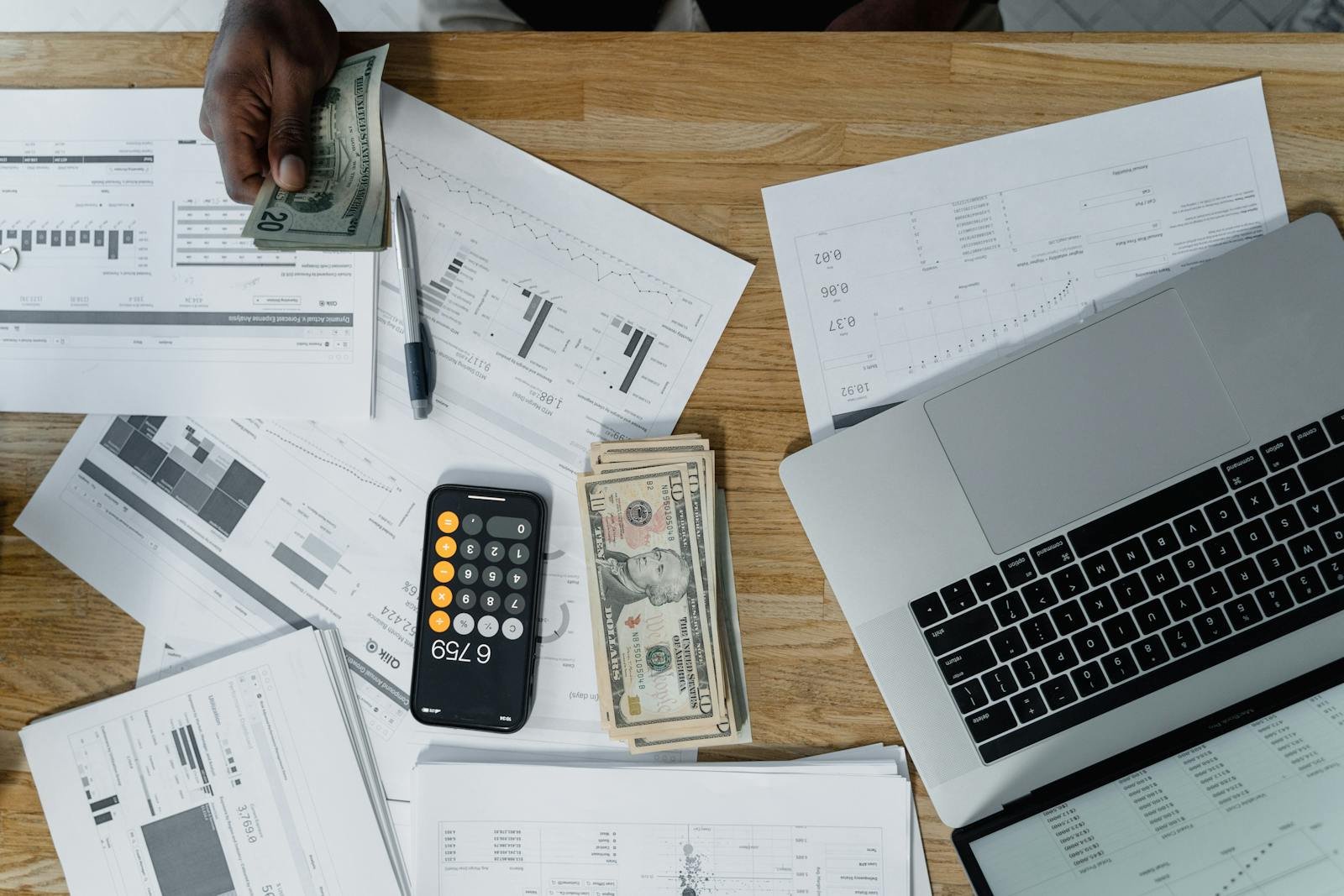
So, you’ve got your first $1,000 ready to invest. Maybe you saved it, got a bonus, or resisted blowing it on a shopping spree. Either way, you’re about to enter the investing world, and let’s be real—this is where most beginners make mistakes that haunt them for years. In this guide, You’ll learn how to invest your first 1K
Investing $1,000 won’t make you rich overnight, but if you do it right, it can be the start of something serious. This guide cuts through the noise and gives you a battle-tested way to grow your money—without losing it to bad advice, hype, or dumb mistakes.
Table of Contents
Step 1: Get Your Financial House in Order
Before you even think about investing, do a quick financial checkup.
Ask yourself these questions:
- Do I have high-interest debt? (If yes, pay it off first.)
- Do I have an emergency fund? (At least 3-6 months of expenses.)
- Will I need this $1,000 soon? (If yes, don’t invest it.)
If your answer to any of these is bad, stop here. Investing isn’t a magic fix for poor financial health. Pay off debt, build an emergency fund, and make sure this $1,000 isn’t money you’ll need in the next year.
ALSO READ:
5 Common Investment Mistakes to Avoid
5 Toxic Money Mindsets That Keep You Broke (And How to Break Free)
Step 2: Know Your Investment Options
A thousand bucks might not seem like much, but you’ve got plenty of solid options. Here’s what you can do with it.
1. Low-Cost Index Funds (Best for Long-Term Growth)
- What it is: A collection of stocks that track the market (S&P 500, Total Market Index).
- Why it’s good: You get instant diversification and long-term gains without needing to pick stocks.
- How to invest: Open a brokerage account and buy shares of an ETF like Vanguard S&P 500 ETF (VOO) or Schwab Total Market Index (SWTSX).
- Risk level: Medium to low (if held long-term).
- Best for: Beginners who want steady growth without managing stocks.
👉 $1,000 move: Put $800 into an S&P 500 ETF, let it grow for decades. Nerdwallet has a comprehensive guide on how to invest in S&P 500.
Use eToro to buy S&P 500 today.

2. Individual Stocks (If You Want to Play the Game)
- What it is: Buying shares of specific companies like Apple, Tesla, or Amazon.
- Why it’s risky: If you choose wrong, your investment tanks.
- How to do it safely: Invest in blue-chip stocks (big companies with solid track records).
- Risk level: High (if picking speculative stocks), moderate (if sticking to big, stable companies).
- Best for: Investors willing to research and hold for the long run.
👉 $1,000 move: Pick two strong companies and invest $200 in each, but don’t go all-in on stocks.
Here are 25 Best Dividend Stocks to Buy and Hold
3. High-Yield Savings or Treasury Bonds (Safe but Slow Growth)
- What it is: Keeping money in a high-yield savings account or buying U.S. Treasury Bonds for steady, guaranteed returns.
- Why it’s smart: Your money is safe, and you still earn a little interest.
- Risk level: Very low.
- Best for: People who want zero risk and easy access to cash.
👉 $1,000 move: Put $200 into a high-yield savings account for liquidity.
4. Crypto (If You Want to Take a Small Risk)
- What it is: Digital currency like Bitcoin and Ethereum.
- Why it’s controversial: Volatile prices mean big gains or painful losses.
- How to invest: Stick to Bitcoin and Ethereum—avoid meme coins and shady projects.
- Risk level: High.
- Best for: Investors with a strong stomach for volatility.
👉 $1,000 move: Put $100 into Bitcoin or Ethereum, but don’t expect overnight success.
Discover 10 Best Cheap Crypto to Buy Now (2025 Edition)
5. REITs (Real Estate Investing Without Buying Property)
- What it is: Real Estate Investment Trusts—companies that own income-generating properties.
- Why it’s smart: You get passive income without dealing with tenants or maintenance.
- Risk level: Medium.
- Best for: Investors who want real estate exposure but don’t have millions to buy property.
👉 $1,000 move: Put $200 into a REIT ETF like VNQ (Vanguard Real Estate ETF).
Step 3: Diversify Like a Pro (Your $1,000 Game Plan)
Now that you know your options, here’s a smart way to split up your $1,000 investment.
Balanced Approach (Low to Medium Risk)
- $800 → S&P 500 ETF (VOO)
- $100 → Bitcoin or Ethereum
- $100 → High-yield savings (for flexibility)
Why?
- 80% in stocks for long-term growth.
- 10% in crypto for a small upside.
- 10% in cash for emergencies or future opportunities.
👉 Result: You’re invested, diversified, and not overexposed.
More Aggressive Approach (If You Can Handle Risk)
- $500 → Individual stocks (2 companies, $250 each)
- $200 → S&P 500 ETF
- $200 → Bitcoin or Ethereum
- $100 → REIT ETF
Why?
- You get high-growth potential with individual stocks.
- The S&P 500 balances things out.
- A small crypto allocation adds risk (but not too much).
- Real estate exposure through REITs.
👉 Result: You’re taking bigger bets but still keeping things balanced.
Step 4: Avoid These Rookie Mistakes
Before you hit “buy,” here’s what NOT to do.
❌ 1. Going All-In on One Thing
Putting all $1,000 into one stock, one coin, or one asset class is a recipe for disaster. Spread it out.
❌ 2. Investing Without Research
If you can’t explain what you’re buying and why, don’t buy it.
❌ 3. Trying to Get Rich Fast
If you’re looking for overnight success, you’re thinking like a gambler, not an investor.
❌ 4. Ignoring Fees & Taxes
Some platforms charge high trading fees. Also, selling too soon can mean higher taxes on profits.
❌ 5. Checking Your Portfolio Every Hour
Markets go up and down. If you react to every dip, you’ll make terrible decisions.
Step 5: What Happens Next?
Now that your money is working for you, here’s what to do:
✅ Stay Consistent: Keep adding money over time. Even $50/month makes a difference.
✅ Reinvest Your Gains: Let dividends and earnings grow your money.
✅ Ignore Hype: Most viral investment tips are garbage. Stick to solid strategies.
✅ Keep Learning: Read, watch, and listen to investing content. Knowledge compounds just like money.
Final Takeaway on How to Invest Your First 1K
The hardest part of investing is taking the first step. Your first $1,000 is just the beginning. If you stay consistent, keep learning, and avoid stupid mistakes, your future self will thank you.
So, are you going to let this $1,000 sit in your bank account doing nothing, or are you going to put it to work? Your call.





